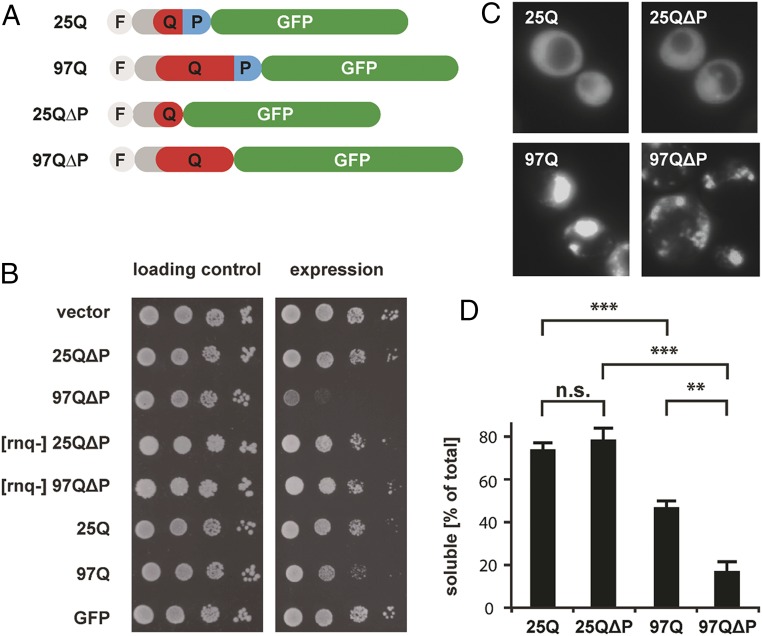Fig. 1.
Toxicity and aggregation of HttEx1 constructs are influenced by polyQ repeat length and flanking regions. (A) Schematic representation of the HttEx1 constructs used in this study. Light gray indicates the N-terminal Flag-tag (F), dark gray the 17 N-terminal amino acids of HttEx1, red the polyQ stretch (Q), blue the proline-rich region (P), and green the GFP tag. (B) Growth test of cells expressing different HttEx1 constructs. Serial dilutions of cells were spotted on plates containing galactose to express the indicated constructs (Right) or on glucose plates as loading control (Left). Expression of 97Q and 97Q∆P causes mild and strong toxicity, respectively, that is dependent on the presence of the [RNQ+] prion (52). (C) Light microscopy imaging of cells expressing the indicated HttEx1 constructs. (D) Percentage of total HttEx1 in the soluble fraction after differential centrifugation (see also Fig. S1C). **P < 0.01, *** P < 0.001 by t test; n.s., not significant.

